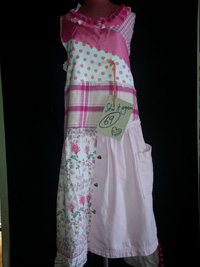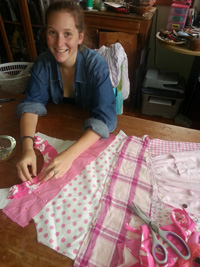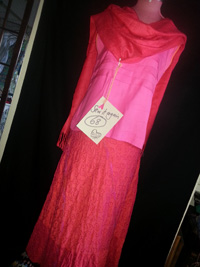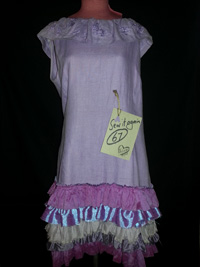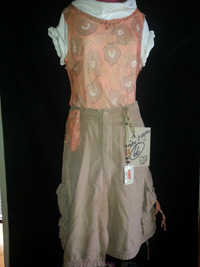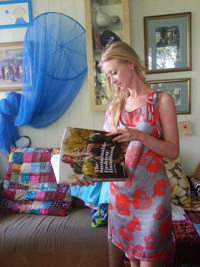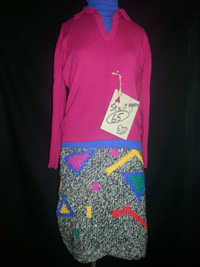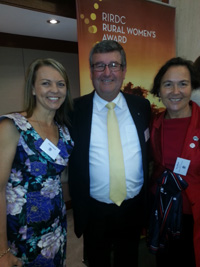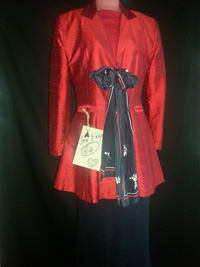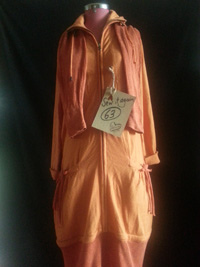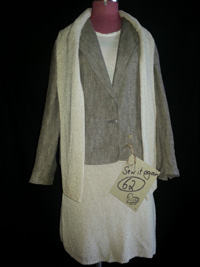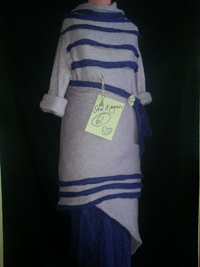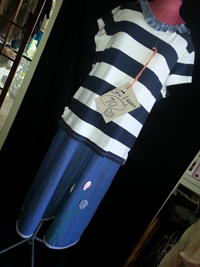
This dropped-waist dress was created by cropping the waistline from a zippered A-line skirt and sewing it to a reversed polo skirt sans collar.
We know charity op shops are bulging with perfectly good clothing. After pondering why so many quality garments are being moved on, I’ve come up with a theory. People are literally outgrowing them and need to upsize. Bingo.
There’s an obvious correlation between our bulging waistlines and the burgeoning mountain of waste clothing. Australia is ranked as one of the fattest nations in the developed world, with three in five people (over 60%) now overweight and that figure is growing all the time.
One of the reasons I sew is to adjust clothes to fit my changing shape. Most people don’t sew – and since clothing has become so cheap it is easy to just upsize by buying new and tossing out the too-tight old stuff.
In their book Plant Obesity How we’re eating ourselves and the planet to death, Garry Egger and Boyd Swinburn link obesity with consumerism and climate change. They suggest we can help ourselves by living a low-carbon lifestyle, changing our way of thinking about how we live as much as our actual behaviours. Continue reading
